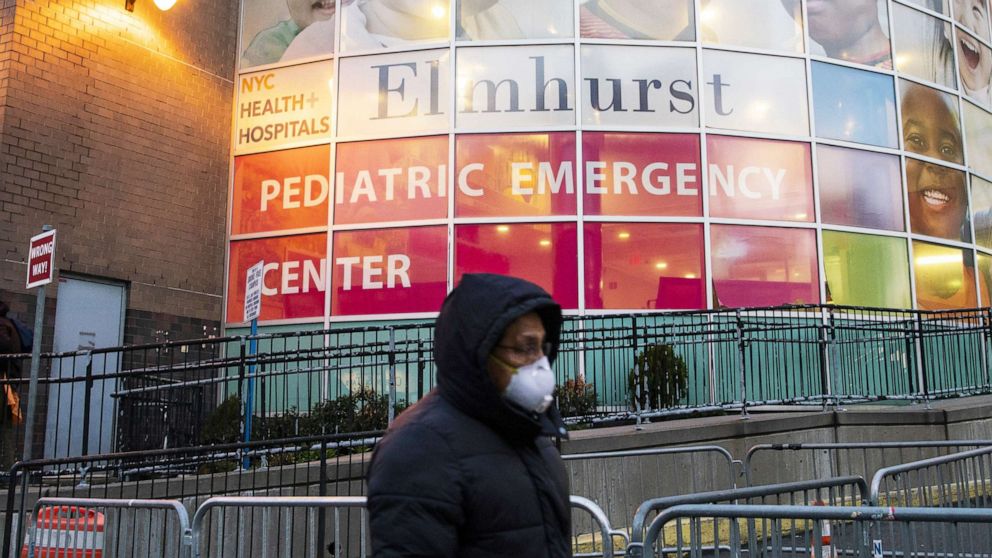[ad_1]
Vice President Mike Pence has taken the extraordinary step of asking the nation’s nearly 4,700 hospitals to submit via email daily updates to a federal inbox on how many patients have been tested for novel coronavirus, as well as information on bed capacity and requirements for other supplies.
The request from Pence to hospital administrators was a stunning admission by the government that it still doesn’t have a handle on the scope of the fast-moving virus and what it needs to combat it.
The letter also exposed serious limitations to the federal government’s ability to communicate directly with states and health care providers, despite being several weeks into the crisis and after years of planning by both Democratic and Republican administrations on how to prepare the nation for a pandemic flu.
Tune into ABC at 1 p.m. ET and ABC News Live at 4 p.m. ET every weekday for special coverage of the novel coronavirus with the full ABC News team, including the latest news, context and analysis.
Heath experts on disease surveillance and data said they were somewhat surprised the federal government didn’t already have this capability, and questioned why the administration waited to set it up now. But, they acknowledged, the U.S. health system is designed in a way in which care is managed by private doctors and hospitals, as opposed to state-run health care systems.
“There are modern approaches to get this data, no doubt,” said John Brownstein, chief innovation officer at Boston Children’s Hospital and professor at Harvard Medical School. “We’re not doing much better than the fax.”
Katherine Hempstead, a senior health policy adviser with the Robert Wood Johnson Foundation who has worked previously on health data and surveillance issues, said most health records are online already. So the inability for the federal government to access that data is probably a mix of privacy concerns and a reflection of how decentralized the health system is.
Unlike state-run health care systems in countries like South Korea and China, the U.S. leaves testing up to private doctors and hospitals, which coordinate with state-run public health departments. Each state manages that health data differently, creating disparate data sets.
“We have a really fragmented system … that isn’t well calibrated to this kind of public health emergency,” Hempstead said. “And I don’t think it’s clear whose fault it is. … It’s just not set up in a way that decision-makers need.”
The federal government was already collecting data from public health labs and private laboratories like Quest Diagnostics and LabCorps. But it doesn’t have data from “in-house” labs at local hospitals that conduct their own tests.
The Centers for Medicaid and Medicare Services, which sent the letter on Pence’s behalf, did not respond to questions about the effort and why it wasn’t created sooner. In a statement released to the public, CMS said the information was needed to address concerns about supply and bed capacity.
“America’s hospitals are demonstrating incredible resilience in this unprecedented situation and we look forward to partnering further with them going forward,” said CMS Administrator Seema Verma.
The Trump administration has been criticized for its slow response to the crisis, in particular the slow rollout of tests. Critics also have questioned the administration’s laser focus on containment in the early weeks of the crisis, imposing narrow travel restrictions despite evidence that the virus was already spreading throughout communities.
Data on where the virus is spreading could provide valuable insight on where the government should send vital supplies like ventilators and protective gear. But so far, the Centers for Disease Control and Prevention has only been able to say how many tests have been conducted in public health labs, not private ones.
Earlier this month, Ambassador Deborah Birx, the White House coronavirus response coordinator, told reporters that more data would help to predict where to put limited resources and she promised that such data would be released online.
“We are committed to not only making it public, but also to have a website that everyone can see in real time,” Birx said at a March 17 press conference.
At the time Birx promised data would be compiled into a website, there were 6,300 known cases in the U.S., according to numbers compiled by Johns Hopkins University.
As of Monday, the number of cases in the U.S. topped 143,000 with more than 2,500 people dead.
Birx this weekend predicted that some 100,000 to 200,000 people in the U.S. will die in the best case scenario with no metro area spared.
With the lack of information available, Brownstein of Boston’s Children Hospital in the past week has co-founded a website, “Covidnearyou.org.” The site asks people to provide daily updates on their systems as a way of crowdsourcing data the government doesn’t have.
Getting data on who is sick can point federal planners to the direction of which hospital might need more resources, he said.
“Otherwise, you’re just flying blind,” he said.
What to know about coronavirus:
[ad_2]
Source link

